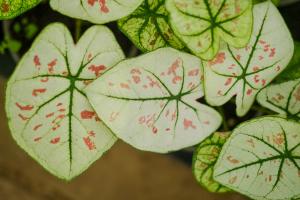Introduction
The river birch (Betula nigra) is a popular deciduous tree that is native to the eastern and central regions of the United States. This tree is known for its attractive bark, which peels off in thin, papery layers to reveal a range of colors, from creamy white to reddish-brown. The river birch is also a great choice for homeowners who are looking to add a touch of shade to their yard. However, one question that many people ask when planting this tree is: how much water does a newly planted river birch need? In this article, we will take a closer look at this question and provide some answers for homeowners.
Watering Requirements for Newly Planted River Birch Trees
The amount of water that a newly planted river birch tree needs depends on a variety of factors, such as the humidity level, temperature, type of soil, and the tree's growth rate. However, as a general rule, newly planted river birches should be watered regularly for the first few years after planting.
During the first year, for example, you should aim to water your river birch tree every week. However, you may need to water it more often if you live in an area with little rainfall or high temperatures. When watering your tree, make sure that the water reaches the root system, which is the most important part of the tree. You can do this by watering the tree slowly and deeply, so that the water has time to soak into the soil and reach the roots.
After the first year, you can usually reduce the frequency of your watering. For example, you might water your river birch every two weeks during the second year, and once a month during the third year. However, it is still important to keep an eye on your tree's growth and health, as this will help you determine whether or not you need to adjust your watering schedule.
Symptoms of Overwatering and Underwatering
Knowing whether or not your river birch tree is getting the right amount of water can be tricky. However, by paying close attention to your tree's leaves and branches, you can identify the symptoms of both overwatering and underwatering.
If your river birch tree is receiving too much water, you may notice that its leaves are turning yellow, developing brown spots, or falling off altogether. The tree's bark may also appear wet or slimy, especially near the base of the trunk. Additionally, you might see new growth at the base of the tree, but not on the upper branches.
On the other hand, if your river birch tree is not receiving enough water, you may notice that its leaves are starting to wilt or curl up. The tree may also appear weak or droopy, and the soil around the base of the tree may be dry and crumbly. If you see any of these symptoms, it is important to adjust your watering schedule accordingly.
Conclusion
In conclusion, newly planted river birch trees require regular watering, especially during the first year after planting. It is important to water the tree slowly and deeply so that the water can reach the root system. Additionally, homeowners should be on the lookout for symptoms of overwatering and underwatering, and adjust their watering schedule accordingly. By following these tips, you can help your river birch tree thrive and enjoy its beautiful bark and shade for years to come.

 how many times do yo...
how many times do yo... how many planted tre...
how many planted tre... how many pine trees ...
how many pine trees ... how many pecan trees...
how many pecan trees... how many plants comp...
how many plants comp... how many plants can ...
how many plants can ... how many plants and ...
how many plants and ... how many pepper plan...
how many pepper plan...





























